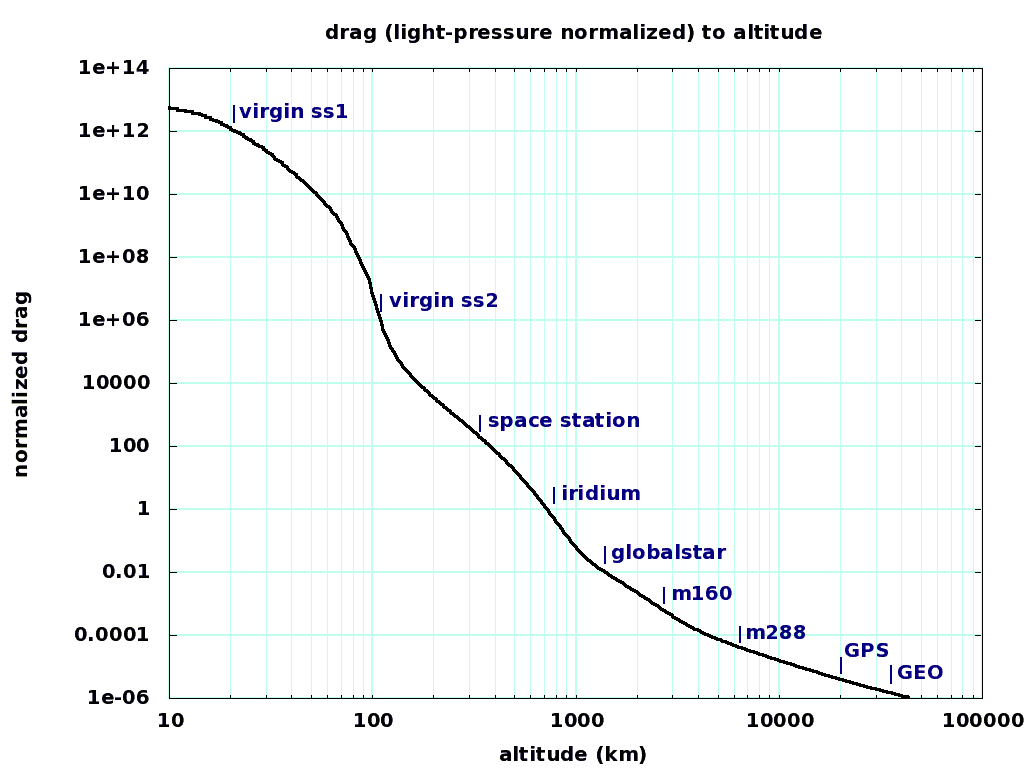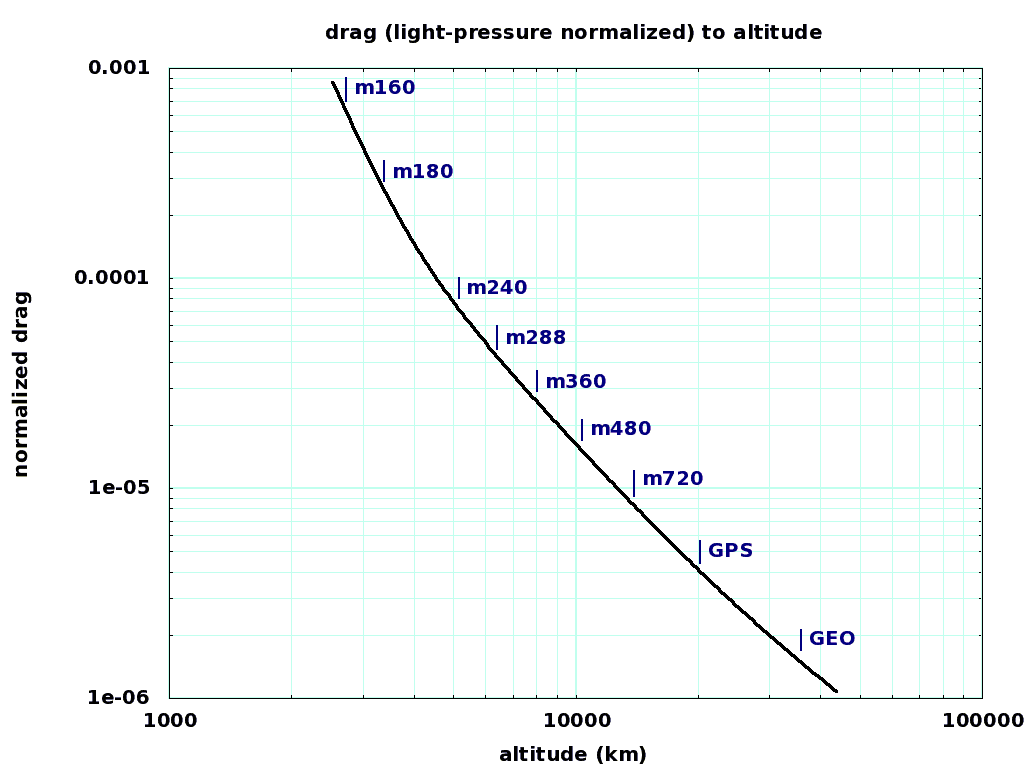Atmospheric Drag
Server Sky orbits in the exosphere, where the air drag is lower than the light pressure ( 4.5 microPascal ). Here is the ratio of "ram air drag", the drag of a flat plate pushing through the attenuated air at altitude, to the maximum thrust from light pressure. The ratio must be less than one to maintain or boost the orbit. It must be much less than 1 if the plate is always facing the sun, with minor thrust corrections on opposite sides of the orbit. This occurs above 1000 km or so.
The actual drag is somewhat less for Virgin Galactic Spaceship 1 and Spaceship 2, which travel at a small fraction of orbital velocity. Still, the air drag is millions to trillions of times higher than light pressure.
The drag at the International Space Station is about 300 times higher than light pressure, and perhaps 2000 times higher than practical maneuvering range. This causes the space station to decelerate, and drop in orbit by 2 kilometers a month. However, a small "tent" pulled behind the space station can contain a decent vacuum, with residual gas moving at orbital speed. While this is still an accelerating frame, the inside of the tent could make a decent test laboratory for individual thinsats.


NASA Future Solar Activity Estimates ... Ronnie J. Suggs, MSFC
guestimated min/max |
2020 |
2027 |
5% confidence limits |
F10.7 UV activity |
70 |
150 |
90 to 240 |
AP magnetic activity |
9 |
20 |
11 to 23 |
NRLMSISE-00 model
ftp://nssdcftp.gsfc.nasa.gov/models/atmospheric/msis/nrlmsise00/nrlmsis00_c_version/
http://hdl.handle.net/2060/20020038771
* f107 and f107A values used to generate the model correspond
* to the 10.7 cm radio flux at the actual distance of the Earth
* from the Sun rather than the radio flux at 1 AU. The following
* site provides both classes of values:
* ftp://ftp.ngdc.noaa.govS/STP/SOLAR_DATA/SOLAR_RADIO/FLUX/
*
* f107, f107A, and ap effects are neither large nor well
* established below 80 km and these parameters should be set to
* 150., 150., and 4. respectively.
*/
"""
def __init__(self, year=0, doy=0, sec=0.0, alt=0.0, g_lat=0.0, g_long=0.0,
lst=0.0, f107A=0.0, f107=0.0, ap=0.0, ap_a=None):
self.year = year #/* year, currently ignored */
self.doy = doy #/* day of year */
self.sec = sec #/* seconds in day (UT) */
self.alt = alt #/* altitude in kilometes */
self.g_lat = g_lat #/* geodetic latitude */
self.g_long = g_long #/* geodetic longitude */
self.lst = lst #/* local apparent solar time (hours), see note above */
self.f107A = f107A #/* 81 day average of F10.7 flux (centered on doy) */
self.f107 = f107 #/* daily F10.7 flux for previous day */
self.ap = ap #/* magnetic index(daily) */